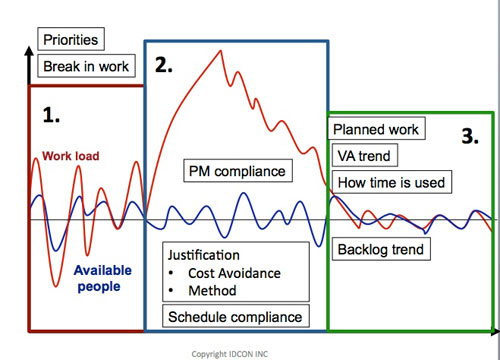I have often compared the use of KPI’s with the fairytale “The Emperor’s New Clothes” by Hans Christian Andersen.
In short, the fairy tale is about two weavers who promise an emperor a new suit of clothes that is invisible to those unfit for their positions, stupid, or incompetent.
One day the emperor parades in the town before his subjects in his new clothes, a child cries out, “But he is naked!” Then all people admitted and said the same thing. Before the child said it no one wanted to admit they were stupid or incompetent.
So what does this have to do with the use of KPIs?
I have done so many audits in plants and mills and very often come across boards posted with KPIs such as: Schedule compliance, Maintenance cost, Preventive Maintenance compliance, Backlog hours, Availability and many more.
There is nothing wrong in these KPIs but when you look deeper into how they are produced and how they are used by the organization you often find they are not used at all to drive performance or they are based on very poor input information.
Ask the questions “Where does the data come from and how do we use each KPI?” Often the answer is that “Martin put these together on a weekly basis, because we have been told to do so, but they do not mean anything to us, we do not understand them and do not use them”.
In a situation like this somebody should say that it is a waste of time to produce and publish all these reports and propose what KPIs should be used instead.
I would propose to divide the KPIs in leading and lagging indicators.
The leading indicators such as Preventive Maintenance (PM) compliance, Schedule compliance, Break in work etc. are actions you take to impact the lagging indicators that include Reliability and Cost.
I would also propose to never use more than three leading KPIs at a time and to match these with the improvement initiatives you are working on. When you have improved on these initiatives and stabilized that performance you move to the next indicator(s).
In a very reactive organization it is a waste to measure schedule compliance because you do most probably not have a reliable schedule to measure compliance against.
To change the performance to more planned, scheduled, and controlled you most probably have to improve two things: use of priorities and preventive maintenance.
After you agree on a guideline for how to set priorities on work (I be happy to send examples to you) you should measure the percent of “break in work” in schedules.
The fact is that if you have too much “break in work” you will always remain reactive. PM compliance would be the next step and you must be certain that the PM program content is right before you measure PM compliance.
When you execute the right PM with 90% + compliance and you reduced your “break in work” to less than 10% in daily schedules you are ready to measure schedule compliance. When schedule compliance is 90%+ for daily schedules your organization is stabilized and ready for continued improvement.
Now you can move to measure: % planned work in schedules, vibration trend, how time is used and backlog trend. Precision planning and scheduling would be next.






